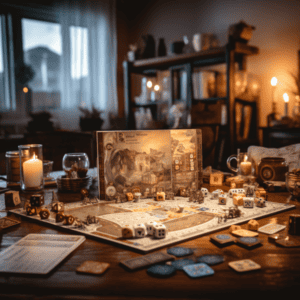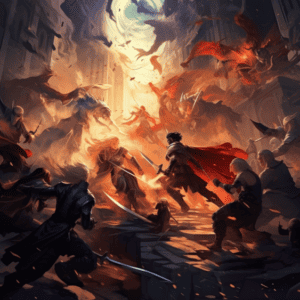
Monster Identification Tips – Hey there, monster identification experts! Are you ready to take your skills to the next level and learn how to spot different monsters?
With a few helpful tips and tricks, anyone can become an expert in no time.
In this article, I’m going to show you some of my personal techniques for identifying different types of monsters.
So read on if you want to join the ranks of experienced monster hunters!
First off, let’s talk about physical characteristics.
You’ll need to be able to recognize certain features that could indicate what type of creature you’re up against.
Pay close attention to size, coloration, and any unique traits like horns or wings – these will help narrow down which species we’re dealing with here.
Additionally, look at posture: something slouching low may well be hiding its true form from us.
Finally, pay attention to behavior patterns; they can tell us a lot about what kind of entity we have on our hands.
For example, is it solitary or social?
Does it seem curious or aggressive?
All these behaviors give clues as to what sort of beast we’ve got lurking around!
Armed with this knowledge, you’ll soon be able to identify whatever creepy critter crosses your path.
So keep reading for more tips on becoming a master monster identifier!
Characteristics of Different Types of Monsters
When it comes to monster identification, understanding the characteristics of different types of monsters is key.
There are many identifying features you should look out for when trying to spot and identify a monster.
These vary from type to type, so being able to recognize these can be very helpful in your quest!
Some common traits among all monsters include their size (they’re usually pretty large!), strength, and ferocity.
They often have an intimidating presence that’s hard to miss, as well as unique physical features such as horns or wings.
Knowing what kind of monster you’re looking for will help you hone in on its specific features more quickly.
With practice, spotting these telltale signs becomes second nature.
Now let’s move onto some common locations where monster sightings take place.

Common Locations for Monster Sightings
Studying monster behavior and characteristics is like a game of hide-and-seek. Knowing where to look for them can help you identify different monsters and understand their habitats. Here are some common locations that monsters frequent:
- Monster sightings often occur near bodies of water, such as lakes, rivers or swamps.
- Monsters may also be found in dark forests with dense vegetation which provide shelter from the sun’s harsh rays.
- Some species prefer open fields or meadows because they offer an abundance of food sources and potential mates.
- Other monsters favor mountain regions due to their cooler temperatures and availability of minerals needed for sustenance.
No matter what environment they inhabit, each type of monster has distinct features that set it apart from others in its habitat. Paying attention to these details can tell us a great deal about how the creature behaves and interacts with its environment. By understanding where certain kinds of monsters live and noting any behavioral patterns, we can better equip ourselves when trying to identify individual specimens. Now that you know where to look, let’s move on to strategies for identifying specific monsters!
Strategies for Identifying Specific Monsters
Now that we’ve discussed the various locations where monsters can be found, let’s talk about how to spot and identify these creatures. Monster identification isn’t an easy task; it requires knowledge of both monster species characteristics as well as a keen eye for spotting them in their natural habitats. To start with, one must know what specific traits each monster species possess so they can distinguish between different types when encountered.
For example, many monsters have bright colored fur or feathers that help make them easier to recognize while others may exhibit unique behaviors such as walking on two legs or having multiple eyes. Additionally, certain features like size and shape of horns, claws, wings and teeth are helpful in identifying particular kinds of monsters. By recognizing these key features, you’ll be able to differentiate the more common monsters from rarer breeds.
Once you’re familiar with the basic physical attributes of a given creature then it is important to observe its behavior – this will tell you even more about which type of monster you might have stumbled upon! Pay attention to any sounds it makes, whether it hunts alone or within a group, and if there are other animals around that seem scared or fascinated by its presence. All these details combined should give you enough information to determine exactly which type of monster is before your very eyes!
Conclusion: Monster Identification Tips

If you’re looking to become an expert at identifying monsters, it starts with understanding their characteristics and where they are most likely to be found. With the right knowledge and strategies, you can easily identify different types of monsters when you come across them. But how do we ensure that our monster identification is accurate?
The best way to accurately identify a monster is by thoroughly examining its features. Pay attention to details such as size, shape, color, texture, etc., which will help you make an informed decision on what type of creature it is. Also take note of any unique physical traits that might give away what kind of monster it is – for example, if a creature has bat-like wings or horns protruding from its head.
Finally, take some time to research various types of monsters online so that you know exactly what each one looks like in detail. Having this comprehensive knowledge about these creatures will give you greater confidence in your ability to spot and identify them quickly and accurately. After all, who knows better than an experienced monster identifier? So why not put your skills to the test today? Are you ready for the challenge?






